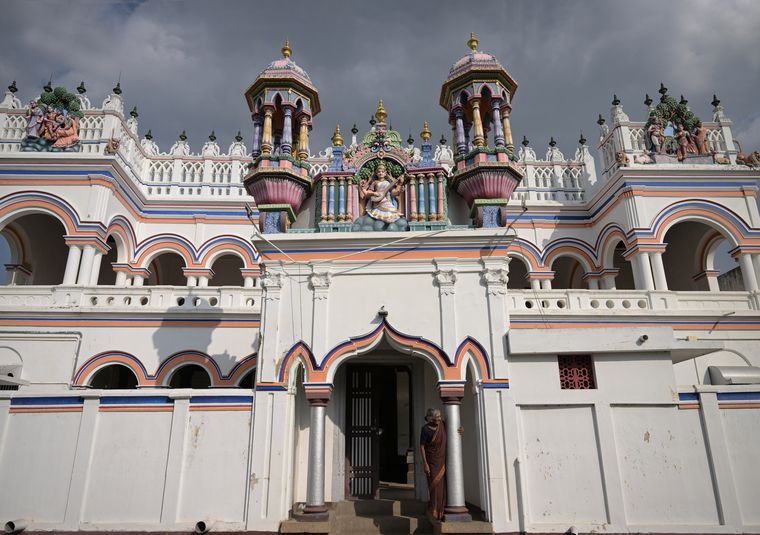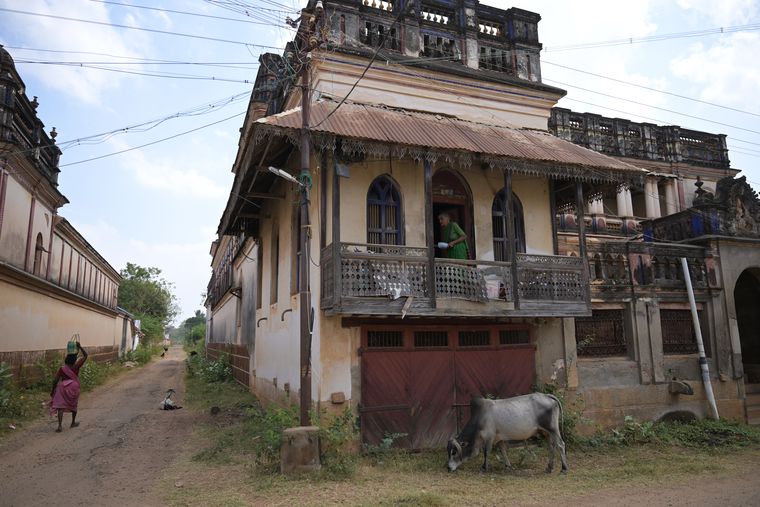Renovating a home is no easy task. And if the home in question is an ancestral mansion, it becomes a different ball game altogether.
Ask Subbaiah Muthaiah (name changed), who took on the mammoth task of renovating his 150-year-old mansion at Devakottai, a popular Chettinad town in interior Sivaganga district of south Tamil Nadu. What was more daunting was getting all his pangalis (paternal cousins) to agree to the renovation. The initial budget came to a few lakhs, but money was not a concern for either Muthaiah or his cousins, who hail from the rich merchant families of the Nattukottai Chettiars. Rather, they bickered over who would supervise the renovation and maintain it post repair. After two years of squabbling, Muthaiah, 58, decided to do the honours himself. It took him six months to revive the mansion, and the work done is for everyone to see.
Old Ravi Varma paintings and a grandfather clock stand sentinel over the mansion’s huge Burma teakwood door, which leads to a massive courtyard dotted with rooms on either side. The clock chimes as we enter the courtyard. A peacock perched on the steel rods above the courtyard squawks, and a few pigeons fly around. As our gaze follows the pigeons in flight, we get a peek into another part of the house. This one has two courtyards, followed by a dining hall and a long kitchen with stoves made of clay. The kitchen opens to yet another small courtyard, and then a massive garden with tamarind and mango trees. Muthaiah’s mansion is among the few restored mansions in Devakottai. His cousins pay him monthly for its upkeep.
There are more than 20,000 such mansions in Chettinad―the land of the Chettiars. Chettinad comprises 74 villages in the arid districts of Pudukkottai and Sivaganga. The 131-km stretch between the two districts is no scenic beauty. All it has for greenery is cacti and tall palm trees. The region is considered the stronghold of the Nattukottai Chettiars or the Nagarathars, known for their penchant for trade, lavish mansions, sumptuous food and rich culture.
The Chettiars, it is said, initially lived on the banks of the Kaveri. Legend has it that the community lost most of its members and wealth to the tsunami that swallowed the ancient town of Poompuhar some 1,500 years ago. Only nine men supposedly survived and moved inland near Sivaganga after receiving nine separate land parcels from the Pandya king. The Chettiar clan, because of the nine men who migrated, comprises nine different lineages. It is believed that the community developed a unique social and business culture and were courted by kings and empires for their ability to generate wealth.
The Chettiars were largely traders and moneylenders. They would trade timber, gems, salt and precious metals throughout southeast Asia. Their business flourished between the 1850s and the 1900s, and so did the community. Many Chettiar men had two wives and at least a dozen children. The palatial mansions were built largely during that period, using imported materials and housing artefact from their travels for trade. Rich in architecture, every Chettinad house is an undiscovered gem. Bright Athangudi tiles (traditionally featuring floral or geometric patterns), shining Italian marble flooring, sparkling Belgian chandeliers, symmetric Burma teak pillars, long rosewood beams, huge foyers, endless courtyards and intricate carvings on doors and windows are common in these mansions.

However, with time, the close-knit community began to move to cities across India and the world for work. And the mansions became empty nests. Some are in ruins and some torn down, their valuable contents sold in antique markets. A few houses have even been split into small houses among cousins.

“Who has the time or funds to maintain them? So, families demolish the mansion, divide the land and wood among themselves and take the proceeds from the sale,” says Meyammai, 78, standing near a tall pillar in her mansion at Ponnamaravathi in Pudukkottai. “But we did not do so. We wanted to maintain it. It was done by my husband’s cousin.” Meyammai is the caretaker of the mansion, while the rest of the family has migrated to other cities. “Everyone comes here when there is a festival or function,” she says.
Architect Periannan Karuppiah says he has renovated close to a dozen mansions. “Chettinad architecture is falling apart due to negligence and is being dismantled systematically for the reuse of its materials for construction. We work towards restoring the cultural, social and economic sustainability of the Chettinad region, especially its architecture and local masonry,” he says. “Maintenance comes at a cost. Redesigning and renovating these houses requires several man hours and hard work.”

Agrees Hari Thiagarajan, who had a tough time renovating his 125-year-old house at Thekkur near Thirumayam in Pudukkottai. But he has no regrets. “My grandfather inherited this house from his ancestors,” he says. “I thought the house must be renovated and maintained to tell the future generations about the culture and architecture.” Thiagarajan runs the textile mills and educational institutions founded by his grandfather in Madurai. His father Karumuttu Kannan was a popular industrialist and philanthropist.

At Nerkuppai in Sivaganga, Shivalingam is the caretaker of a 150-year-old mansion, in which at least 85 families have shares. Shivalingam, who lives in Madurai, visits his ancestral house once a week. “All of us meet once a year when we read the Ramayan during the month of Purattasi (October-November),” he says. Even after the renovation, Shivalingam, who is in his early 60s, thinks that there is much more to be done.
That is certainly true when it comes to keeping the legacy of Chettinad mansions alive.



